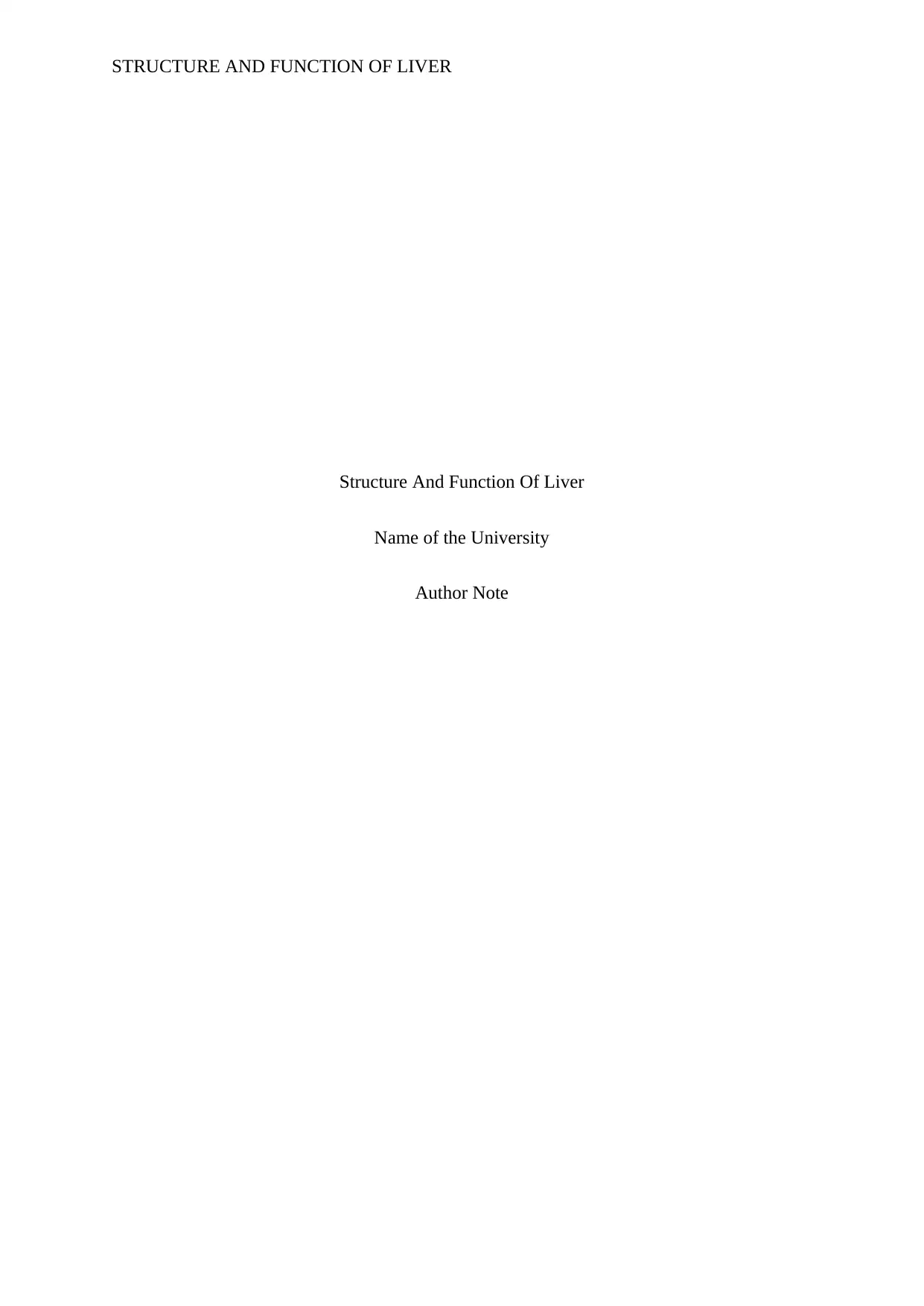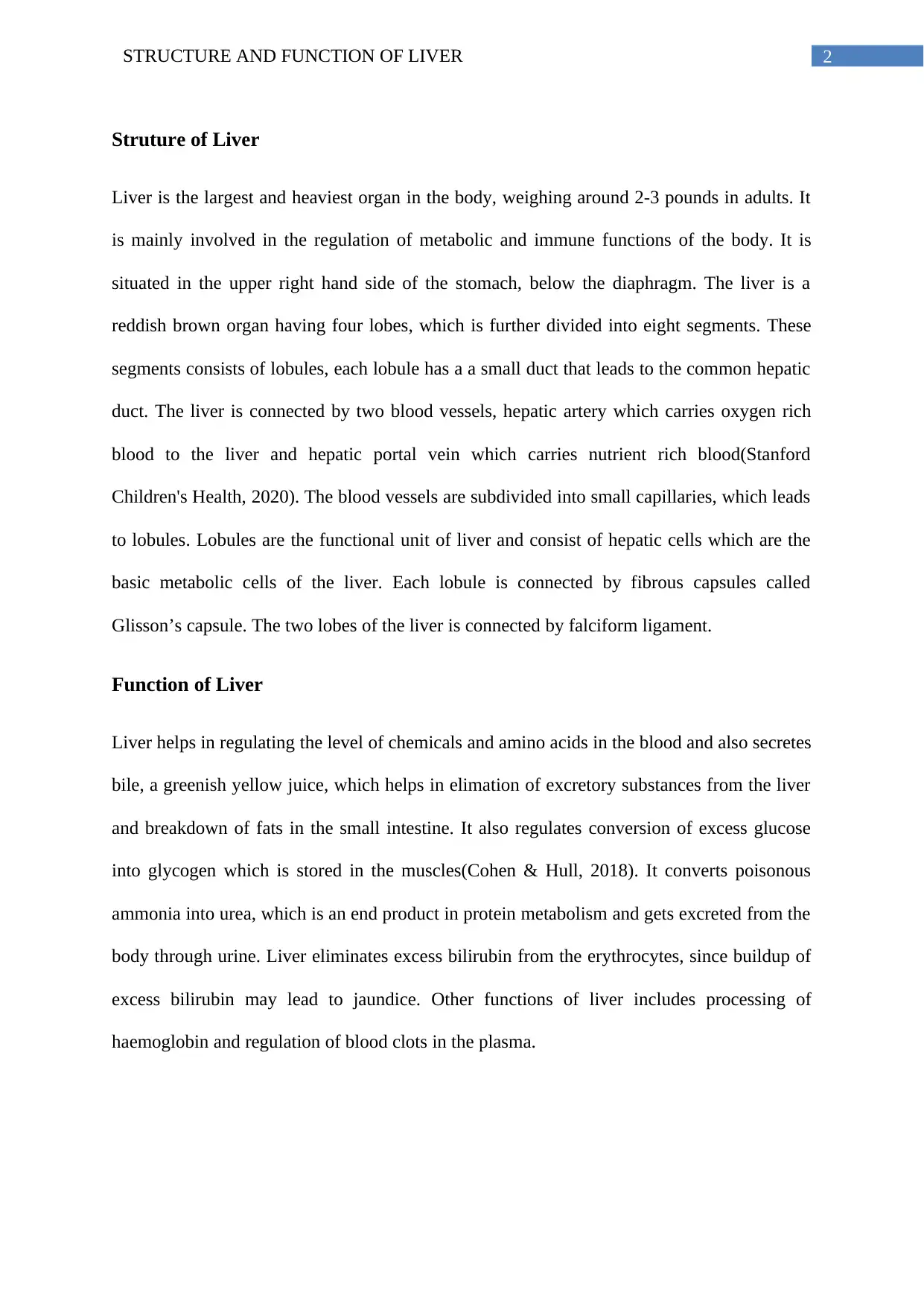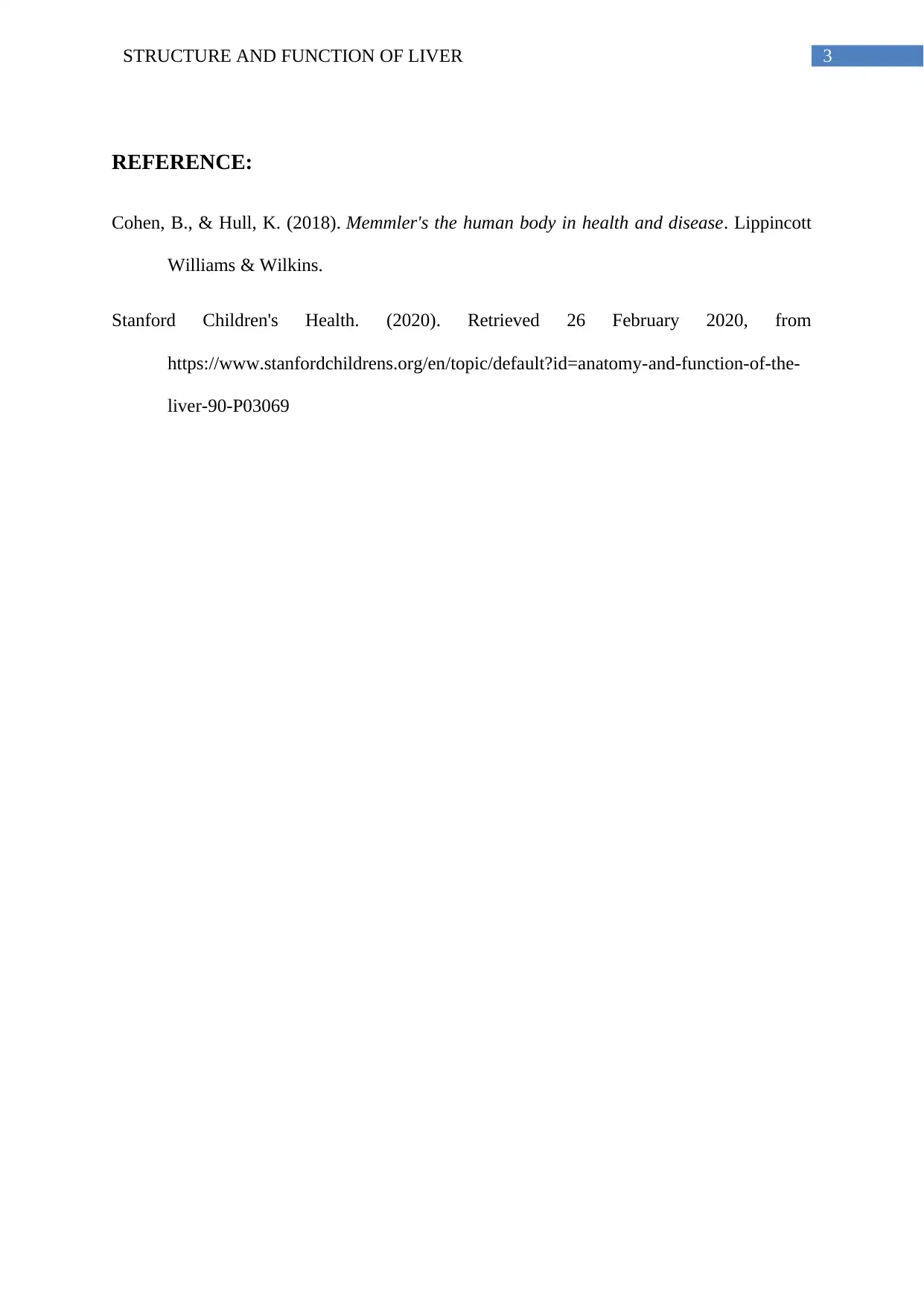Analysis of Liver Structure and Function: Biology Report
VerifiedAdded on 2022/08/12
|3
|397
|26
Report
AI Summary
This report provides an overview of the structure and function of the liver. It begins by describing the anatomical features of the liver, including its lobes, lobules, and the Glisson’s capsule. The report highlights the role of blood vessels, such as the hepatic artery and portal vein, in supplying blood to the liver and the structure of lobules, which are the functional units of the liver, containing hepatic cells. Furthermore, the report details the key functions of the liver, including the regulation of blood chemicals, bile production, conversion of glucose to glycogen, conversion of ammonia to urea, processing of bilirubin, and regulation of blood clots. References to the provided sources such as Stanford Children's Health and Memmler's the human body in health and disease are also included.
1 out of 3










![[object Object]](/_next/static/media/star-bottom.7253800d.svg)